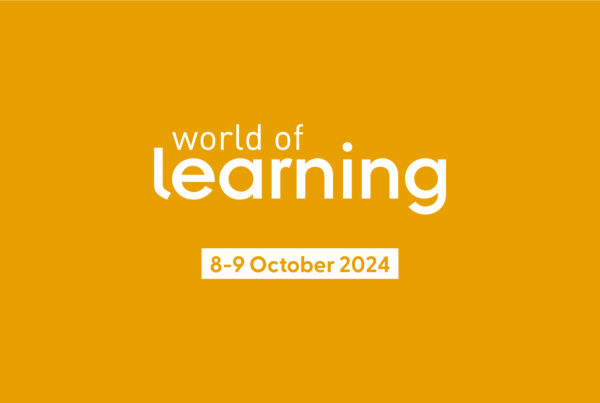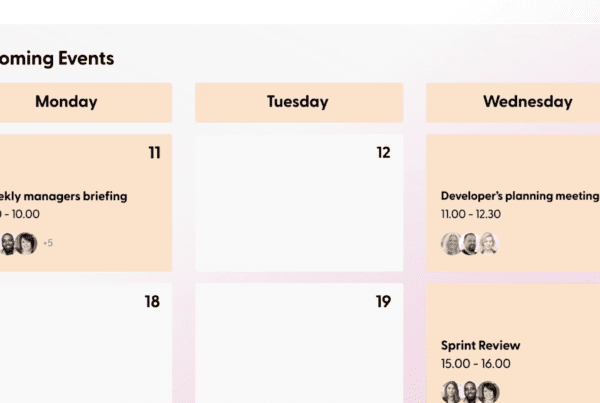The UK does suffer from a skills gap in the workforce.
In fact, research shows that around 40% of the workforce is either under or overqualified for their role, at least according to Oxford Learning College.
Now, this might seem like an eye-opening statistic. 😳
But it’s nothing new.
Skills gaps have always existed. Workplaces evolve.
Right now, the global workforce is accelerating towards a digital economy. One that, if organisations are brutally honest, they’re not prepared for.
Again, this is nothing new, however, it highlights a vital point: to succeed in today’s workplace, organisations must understand everything about skills gaps, from what they are to their importance, and how to future-proof your organisation. ☺️
Interested in learning more about how to identify and address skills gaps, including the key steps to identifying and analysing the actions you need to take to optimise organisational performance? We’ve got you covered. 👇👇
What is a skills gap?
Any gap between the cumulative (and individual) knowledge and skills of your workforce and the aptitude required for the work is a “skills gap.” The problem with this is that it highlights workplace inefficiencies.
Members of staff may struggle or be incapable of performing their roles.
On a grander scale, a skills gap can refer to the general lack of skills in the labour market.
An example of this is the UK’s logistics sector. After a bit of investigating, you’ll discover that the sector suffers from a chronic shortage of young talent. This is unambiguous evidence of a skills gap.
The good news is that there are many ways that organisations can address and resolve skills gaps. Introducing new procedures. Implementing innovative technology. Fostering a new work culture. And more. There are so many ways that organisations can bridge their skills gaps.
The first step is identifying skills gaps. 🧐
The importance of identifying skills gaps
An effective workforce is one with many attributes.
Knowledge is one. Team spirit is another. A shared set of values is one more.
But the most important attribute is high skill levels. Your organisation cannot excel if it doesn’t have the aptitude, right?
To be effective, organisations MUST identify skills gaps, understand how they inhibit performance, and take appropriate action to improve skills, conquer challenges, and simply, be better.
Now, we all know that digital platforms, automation, AI, and countless other innovations can bridge skills gaps, helping workforces to be better. But even in 2024, there are still gaps that need to be bridged. 🌉
Don’t believe us? The World Economic Forum estimated that half of all global employees will need to be reskilled to operate in tech-powered workplaces.
But there’s more…
According to a 2022 survey of CEOs by Deloitte, skills shortages were the second most cited external factor disrupting business strategy.
However, the benefits of identifying organisational skills gaps are clear and vital for organisational success, and we’ve listed these below: 👇👇
✅ Having a complete understanding of your workforce
✅ A more productive workforce
✅ Improved commercial dexterity
✅ A clear workforce planning strategy
✅ A competitive advantage over other organisations
The question is, can you afford to not reap the benefits?
Steps to identify skills gaps in your organisation
As any experienced L&D professional will tell you, identifying skills gaps in any organisation is paramount. Why? Simple. Once you understand skills gaps, you can design training and development programs that directly address the organisation’s needs.
There are several steps to identifying skills gaps in your organisation. Follow each and you’ll be able to pinpoint skills gaps and take action to plug them across your organisation.
Step one: define your organisational objectives
Successful organisations have a vision for the future. This allows them to identify any skills gaps and implement actions to bridge them and bolster organisational performance.
To do this, organisations need to know what their short-and-long-term goals are and what skills are required to achieve these goals.
Don’t forget to routinely revisit and revise organisational objectives when there’s a change in the organisational strategy and commercial environment. 💡💡
Step two: review job roles
To thrive across all departments, job roles must be reviewed to understand the requirements, responsibilities, and if all the requisite skills for success are present. Organisations who do this, have consistently optimised performance across all departments.
Remember to review both frontline and upper management employees to gain a solid understanding of every role and how they fit together to form a robust business.
Step three: gather feedback from everyone
Just as senior decision-makers and managers are able to affect change within an organisation, so too are frontline members of staff. All they need to do is to provide feedback. Quite simply, gathering feedback is one of the best ways to identify skills gaps.
How can you do this?
Encourage colleagues to fill out and anonymously share feedback forms, questionnaires, and even interview sessions discussing how skilled they believe themselves to be and if they’d benefit from any additional training.
Step four: complete skills assessments
Evaluate current employee skills by encouraging them to complete assessments. Once you have gathered the assessments, compare the results against the desired skill levels.
Be sure to cater to different learning styles and avoid learning by repetition by interchanging different assessment types and styles.
Step five: review performances
Review performances, project results, and other relevant data to identify areas where employees are falling short. Use data visualisation tools to spot patterns and trends over time. Therefore, adopting a more holistic understanding of skills gaps. 💡
Step six: design competency frameworks
Develop competency frameworks to explain the desired skills, knowledge, and abilities required for each role. Once developed, benchmark and continuously update them as the industry evolves.
Step seven: get stakeholder feedback
Decision-makers, clients, senior colleagues, suppliers, or other external partners can provide insights into areas where your employees might be lacking.
Regularly schedule feedback sessions and establish open channels of communication with these stakeholders to make sure that the right skills are being identified and steps are being taken to upskill and reskill colleagues.
Step eight: know and leverage industry standards
The L&D sector evolves. So too does every other commercial sector. For instance, AI and automation are transforming how many of us work. Innovation won’t ground to a halt either. New tools, technologies, and ways of working will continue to evolve. 💡
By understanding and leveraging industry standards, organisations will be able to deliver a superlative service, one that reflects strong skillset levels.
Step nine: keep a spreadsheet of employee skills
Why not keep an HR report or even a departmental spreadsheet of employees and their skills?
This allows you to review and identify any skills gaps in seconds. Be sure to update the spreadsheet every few months, or when the organisation experiences staffing changes or L&D to keep it current and accurate.
Make sure that departmental managers and senior decision-makers have access to the report or spreadsheet so that they can view skillsets and make hiring decisions.
Step ten: arrange focus groups
Organise group discussions amongst employees to help them to better understand the challenges they face and if they’d collectively or individually benefit from upskilling or suggest L&D and additional training that they’d benefit from.
8 types of skills gaps in the workplace and how you can bridge them
Here’s where it gets interesting. Not everyone agrees that there is a skills gap in the workplace. Some online resources go as far as to suggest that the skills gap is a myth.
According to one report from the Oxford Learning College, 66% of “large businesses” said that they would struggle to recruit employees with the skillset they need to drive the business forward.
Additionally, 63% of players in the education sector, 52% of players in the manufacturing sector, and 52% of leisure and hospitality companies would face the same struggles when looking for stellar candidates to fill roles.
So, what are the large skills gaps that plague the workplace?
Below are the commonplace skills gaps that employers should bridge to optimise their workplace performance. 🤔👇
Gaps in hard skills
Not every employee will be fluent in the most niche or complex of digital software solutions or online platforms. However, a certain degree of IT literacy is expected.
The same can be said of core role competencies, including machine operation, leadership, or decision-making. Employers should know how to identify these skills and take steps to improve competency through learning and development actions.
Gaps in soft skills
Having strong soft skills is just as important as having strong hard skills.
Organisations plagued with a lack of interpersonal, verbal communication, written or teamwork skills will not be as efficient as organisations that have invested much time and effort into identifying and resolving skills gaps.
For example, gaps in critical thinking and problem-solving will affect an organization’s ability to make decisions and solve problems. Gaps in leadership skills can affect employees at various levels of the organisation, from team leaders to senior decision-makers.
Having dedicated and ongoing L&D training will help employers identify and address gaps in soft skills and upskill teams.
Gaps in transferrable skills
In today’s modern working environment, organisations need to adapt to a rapidly evolving environment. This means that employees need to be able to adopt innovative technologies to meet evolving job requirements.
Also, identifying skills gaps highlighting a team member’s ability to prioritise tasks, meet deadlines, and manage time effectively, whilst offering a wealth of L&D options to address these skills gaps will help organisations to optimise performance.
Gaps in education and training
Skills gaps are not just limited to seasoned employees.
In fact, some of the most glaring skills gaps are in education and training. This includes the necessary formal education or qualifications needed to contribute to a role and a lack of training to perform role functions with skill and precision.
Focus on identifying gaps in education and training and upskilling employees and you’ll improve efficiency across the whole business.
Global skills gaps
A modern workforce is a global workforce. And yet there are challenges to this way of working.
Language is one. Cultural differences are another.
Bridging the skills gaps by focusing on improving the cultural and language barriers will foster team spirit and collaboration, improving relationships with international colleagues.
Digital skills gaps
Today’s professional environment requires people to have strong digital literacy skills.
Organisations that focus on upskilling employees so that they have advanced digital skills will be more efficient and productive. 🚀🚀
Industry-specific skills gaps
Different industries require different skillsets. Employees need to have the required knowledge and know how to apply it to their day-to-day roles. Organisations that focus on making sure their workforce has the required industry-specific experience and knows how to apply it will be successful.
AI skills gaps
In our rapidly evolving workplace, AI is becoming increasingly prevalent. And yet some employees lack the understanding or skillsets to leverage the technology to improve their finesse. Organisations that learn how to leverage AI technology in the workplace, like that offered by Thirst. 🦾
Conducting a skills gap analysis
A skills gap analysis is an essential tool for organisations to assess the effectiveness of their workforce. Why? Identifying skills gaps will help businesses understand how to optimise performance.
The evolution of workplace technology, including the proliferation of AI is transforming business sectors, and the need for sound skills gap analysis is only growing, especially because digitisation and automation are redefining what companies need from their employees.
So, if you want to optimise organisational operations, you need to conduct a skills gap analysis, identify where there are skills gaps, and take the required steps to bridge them. This includes better recruitment processes and active training.
Don’t forget that talent is the biggest asset organisations have.
To drive organisational success, it’s paramount that performance is optimised. This starts with recruiting the right candidates and continues by giving them access to resources, like Thirst for example, to promote professional development and continued success.
Future-proofing skills
Identifying skills gaps and pivoting your L&D towards bridging these skills gaps is the single best way to future-proof your business. And this is essential in any market. But what are the core benefits of implementing a skills gap process? We’ve listed the core benefits for you below: 👇
✅ It gives your organisation a competitive advantage: identifying skills gaps fosters a continual learning ethos, improving individual and team performance, giving your organisation a competitive advantage, both through individual and collaborative learning.
✅ Workforce insight: having a good insight into your workforce allows organisations to make better decisions. This includes monitoring performance. Identifying skills gaps allows organisations to identify which employees have excellent, in-depth knowledge and which employees would benefit from being upskilled.
✅ It results in greater productivity: without the required knowledge and skills, employees cannot perform. This results in a loss of productivity. But by identifying and bridging skills gaps, employers can improve productivity, which will optimise productivity and time.
✅ Strategic workforce planning: with no skills gaps, organisations can ensure that they have the right number of employees, all with the right skills, across every department. This means that you can take a strategic, robust approach to recruitment.
✅ Boosts employee retention: to succeed organisations must have a strong, experienced, productive, happy workforce – one that collaborates and believes in one another.
By identifying and bridging skills gaps, organisations will boost employee knowledge – and trust.
More than that, employees will feel that they’re valued, and have been invested in by the organisation.
All this will result in greater employee retention.
✅ Informs your hiring strategy: of course, there will be times when employees move on to pastures new. That’s just a fact of working life.
Then the question is, how do you hire a replacement for the vacated role?
Do you look for someone with the same skills or do you choose an individual with slightly different skills who you believe will be able to bring more value to the business?… It’s only by identifying skills gaps that you can make this decision.
Identifying AND bridging skill gaps is paramount in 2024
Let’s be honest. If you want your organisation to excel in 2024 you must optimise the skills of your talent.
This means identifying and bridging skills gaps is paramount. Just imagine how much more successful you could be if everyone in your organisation excelled in every area of the role!
Hard skills. Soft skills. Everything in between. Investing the necessary time in honing a company-wide ethos, one that’s focused on optimising everyone’s skillsets for today and the future will improve performance today and tomorrow.
And L&D professionals can spearhead the evolution of your company-wide skillsets by adopting a continuous learning approach, leveraging AI and other technologies, even collaborating with HR to make sure that all employees are content in their roles.
Do this and you’ll be able to provide a better service to your customers, initiate vital microlearning and training modules, and align not only business objectives but individual goals with organisational needs.
In short, if you want to be better, you need to identify skills gaps.
Want to learn more about Thirst’s innovative, industry-leading learning platform and how we’re shaping L&D operations?
Get in touch and book a demo today.
For more e-learning insights, resources and information, discover the Thirst blog.
You may also enjoy:
What Is Induction Training? [Definition + Benefits] | How to Build a Learning and Development Strategy in 2024 | The Ultimate Guide to Sharing Best Practices






